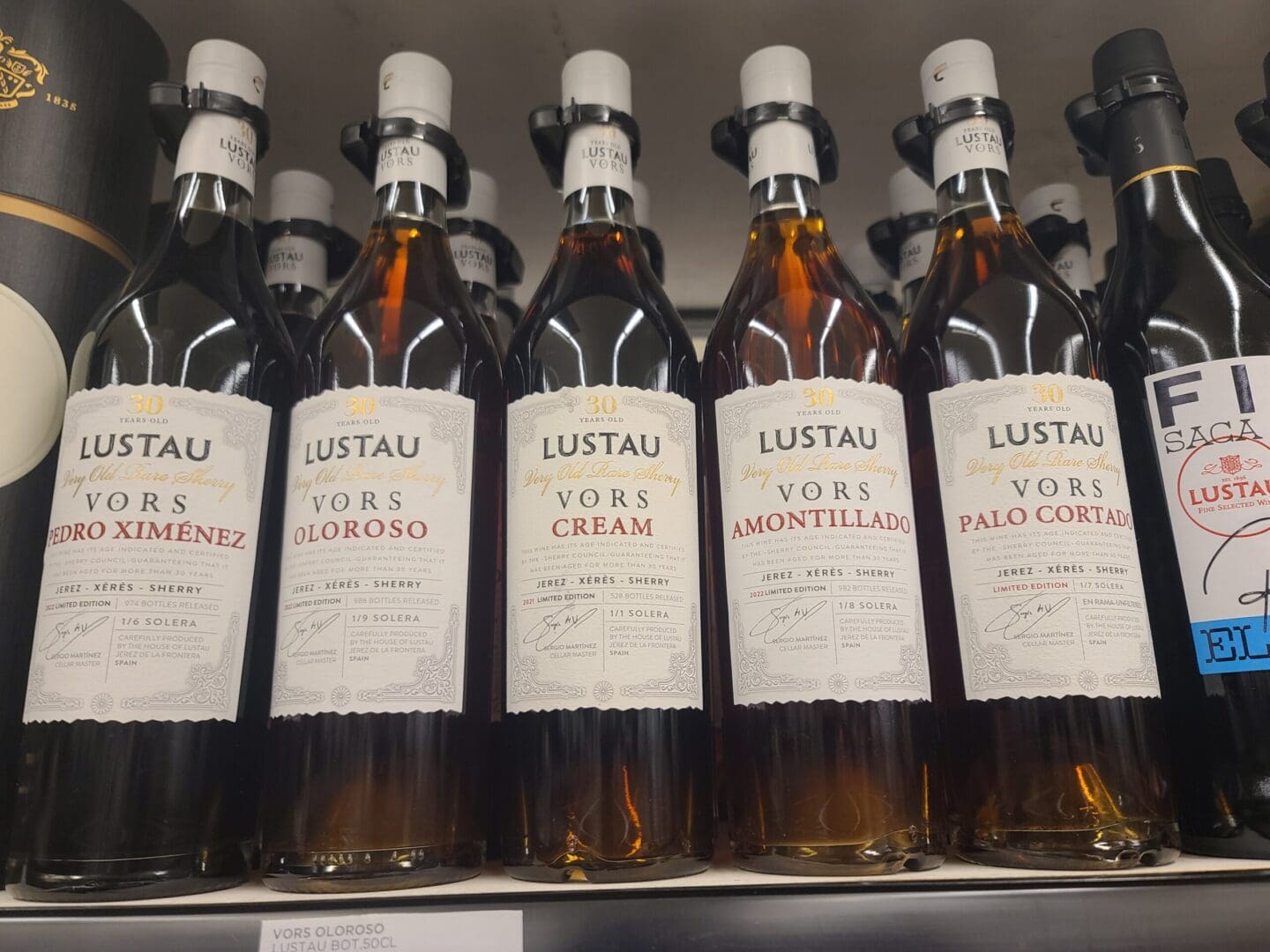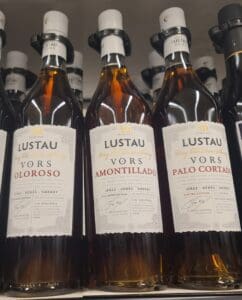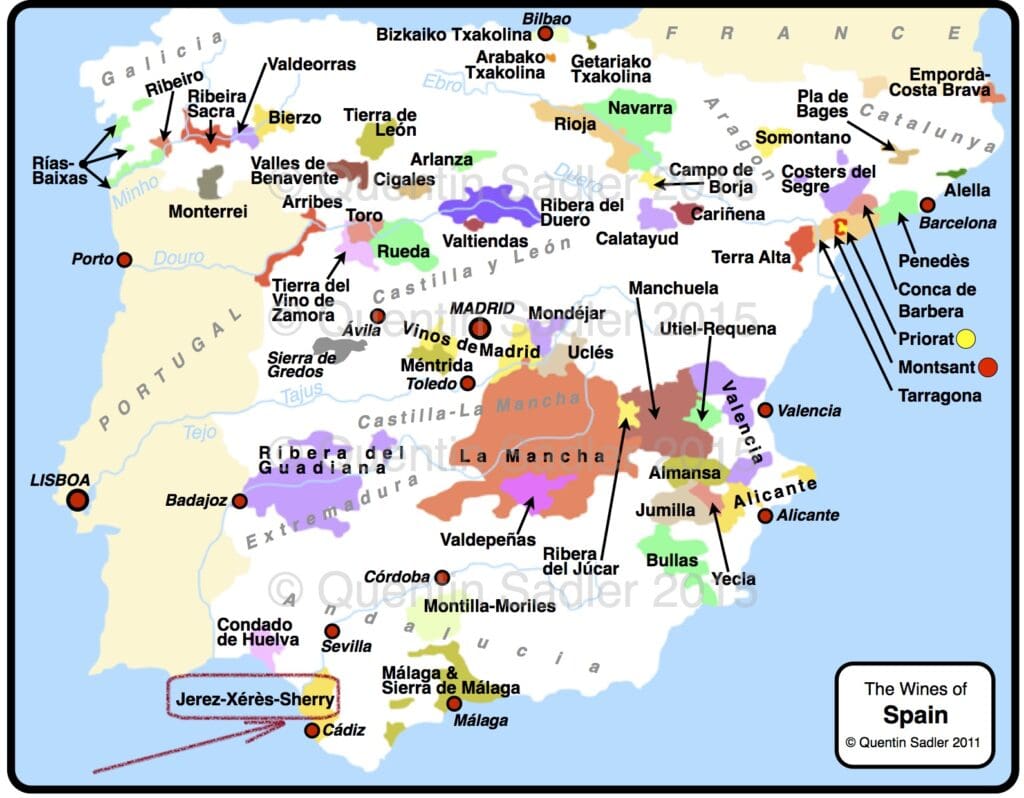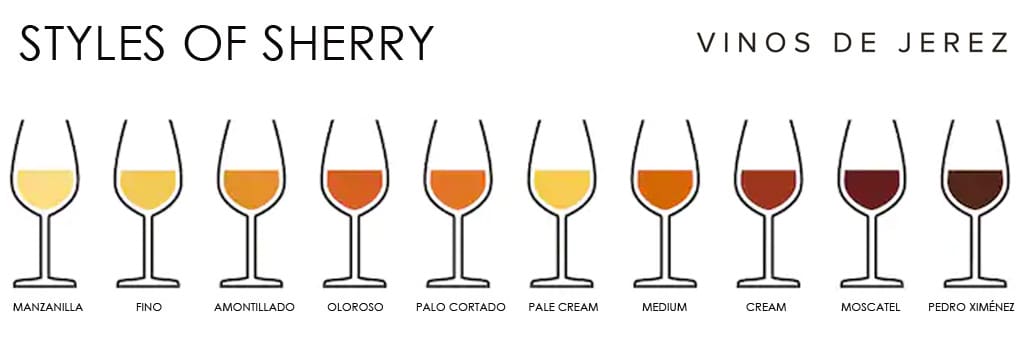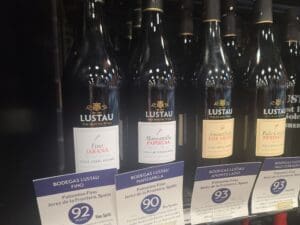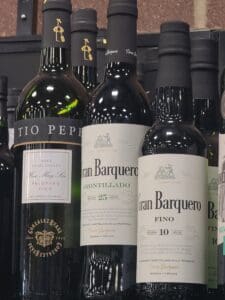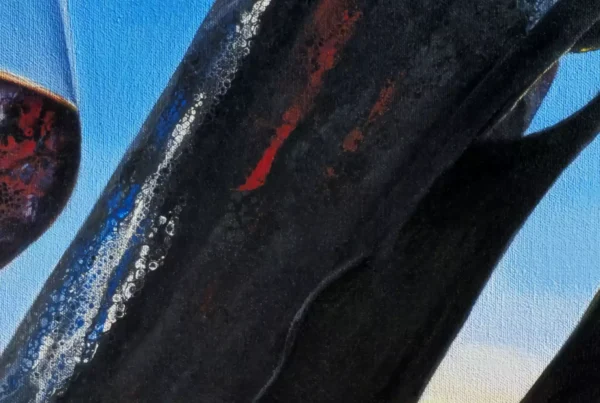Introduction
The world of Sherry wine is experiencing an identity renaissance in the United States. Historically, the sweeter varieties of Sherry were predominantly exported to American shores, while drier styles enjoyed popularity within Spain and across Europe. This trend has led to a narrow American perception of Sherry as exclusively a dessert wine.
What surprises me, amidst the robust popularity and palate preferences for whiskeys, bourbons, and scotches, Sherry has not yet been widely embraced. I believe that with increased awareness and appreciation for the multifaceted styles of Sherry, we will see a surge in its popularity among spirit enthusiasts.
Whether you are a seasoned whiskey lover looking to branch out or a curious newcomer eager to learn, this guide promises to demystify Sherry and perhaps even reveal your next favorite pour.
This post is designed in two folds. The first section explores the types of Sherry that resonate with whiskey lovers, drawing parallels that will intrigue and entice. The second section provides an educational overview of Sherry, offering insights from vineyard to glass. Join me in uncovering the complexities and charms of this versatile wine category from my hometown of Jerez, Spain.
Part 1
Getting straight to the point, for whiskey enthusiasts looking to explore the world of Sherry, three distinctive types stand out: Oloroso, Palo Cortado, and Amontillado. Each of these Sherries offers a complexity and depth of flavor that is likely to resonate with a whiskey connoisseur’s palate. Below, we’ll explore each of these Sherries.
Oloroso Sherry:
- Characteristics: Dark, full-bodied, and aromatic with strong nutty and dried fruit flavors.
- Why A Whisky Lover Would Like It: Oloroso sherry shares similarities with aged whisky due to its complex flavor profile and its aging process in oak barrels. The oxidative aging process imparts rich and deep flavors, which can be quite appealing to whisky enthusiasts.
Palo Cortado Sherry:
- Characteristics: A rare and intriguing type of sherry that combines the elegance of Amontillado and the richness of Oloroso. It offers a balanced profile with nutty and citrus notes.
- Why A Whisky Lover Would Like It: Palo Cortado’s complexity and balance make it an interesting choice for whisky lovers, offering a unique tasting experience that challenges the palate in a similar way to a fine whisky.
Amontillado Sherry:
- Characteristics: Aged initially under a layer of flor and then oxidatively, it has a rich amber color, with flavors of nuts, spices, and a hint of sweetness.
- Why A Whisky Lover Would Like It: Amontillado’s aging process and resulting complexity can be reminiscent of certain whisky styles, particularly those that have undergone a secondary maturation in sherry casks (which I hear is all the rage today in the whiskey world).
Serving Temperature: Serve Oloroso, Palo Cortado, and Amontillado sherries slightly chilled to fully appreciate its flavors.
As I conclude part 1, grab your glasses for part 2 – we’re about to embark on a flavor-filled journey with the full suite of sherries! It’s not just for your grandma’s cabinet; it’s a vibrant world waiting to tickle your taste buds. With that, let’s raise a toast to sherry and all its delicious secrets!
Part 2
So where does sherry come from? The simple answer is Jerez, Spain – a place where the vines soak up the sun, crafting a wine that’s as diverse as it is delightful. The word Jerez – translates to Sherry in English. So Jerez is the sherry wine capital of the world.
The more correct answer however, is Sherry is from “The Jerez Triangle” which is the crucible of Sherry Wine Production
This triangle is nestled in the enchanting region of Andalusia, Spain, and the ‘Triangle’ is made by drawing a line amongst the trio of towns — Jerez de la Frontera, Sanlúcar de Barrameda, and El Puerto de Santa María — this tringle has the soil, hot & dry summers, and proximity to the Atlantic Ocean that all play a role that forms a haven for growing the illustrious Palomino, Pedro Ximénez, and Moscatel grapes, used in sherry production.
To help put this area into perspective, here is a map that shows this triangle towards the bottom
The 10 Types of Sherry Wines:
Sherries offers a fascinating array of styles, each with its own story and savor. Let’s embark on a journey through ten distinct types of sherry, each decouple the list, followed by some takeaways.
- Manzanilla is a type of fino sherry produced in the coastal town of Sanlúcar de Barrameda. It has a slightly salty taste due to its proximity to the sea. Pair it with seafood, olives, or almonds.
- Fino is a dry, light, and crisp sherry aged under a layer of flor (yeast) in the solera system. It has a pale color and a delicate almond flavor. Serve chilled with tapas, seafood, or light dishes. (Serve really cold on a hot summer day, you’ll thank me latter)
- Amontillado starts its life as a fino but undergoes additional aging without the flor, resulting in a darker color and a richer, nuttier flavor. It pairs well with cheeses, nuts, and savory dishes.
- Oloroso is aged without the flor, resulting in a dark, robust sherry with flavors of nuts, spices, and dried fruits. It is perfect for sipping on its own or pairing with red meats and strong cheeses.
- Palo Cortado is a complex sherry that combines the finesse of an amontillado with the richness of an oloroso. It is best enjoyed on its own or with mature cheeses and cured meats (Jamon Iberico anyone?).
- Pale Cream Sherry is a lightly sweetened version of Fino or Manzanilla. It maintains the crispness of a Fino with a touch of sweetness that doesn’t overwhelm the palate. This makes it an excellent accompaniment to light appetizers or soups.
- Medium Sherry strikes a balance between sweet and dry, offering a moderate sweetness that’s more pronounced than Fino but not as rich as Cream Sherry. It pairs wonderfully with a variety of foods, including pâté, spicy cuisine, or as a refreshing after-dinner drink. In the US, this is known as “Dry Sack” or ‘Character’ and this hybrid has a blend of Amontillado, Oloroso and Pedro Ximenez.
- Cream Sherry is a sweet wine, usually a blend of oloroso and Pedro Ximénez or Moscatel wines. It is rich and velvety, making it an excellent choice for desserts or sipping on its own.
- Moscatel is a sweet sherry made from the Moscatel grape, often exhibiting flavors of orange blossom, citrus, and honey. It’s a dessert in itself but also pairs splendidly with fruit-based desserts or simply as a sweet end to a meal.
- Pedro Ximénez is made from sun-dried Pedro Ximénez grapes, this sherry is intensely sweet with flavors of raisins, figs, and molasses. Serve it as a dessert wine or pour it over ice cream. It doesn’t get any sweeter than this
The diversity of sherry can be as intriguing as it is daunting – but therein lies the adventure. I know the above may seem like a veritable kaleidoscope of styles with unique characteristics, but as I started this post, there are groupings that make this more manageable.
- Starting with 1&2, light-bodied Fino and Manzanilla invite you to the bustling tapas bars of Jerez, pairing exquisitely with slivers of Iberico ham and briny olives.
- 3&5, Amontillado and Palo Cortado, whose amber hues and complex layers of nuts and spice offer a more contemplative experience, demanding attention and slow appreciation.
- 4, Oloroso stands apart with its oxidative aging, a process that imparts a boldness and a tapestry of dark fruit, walnut, and leather – a testament to patience and the transformative power of time.
- 6-7&8, Cream and Pale Cream sherries cater to those who walk the middle path, providing a gentle sweetness that balances the traditional dryness, making them versatile companions
- 9&10, lean heavily to the sweeter end of the spectrum. Moscatel, with its floral and citrus bouquet, is a perfect accompaniment to a leisurely afternoon. And finally, the Pedro Ximénez, so rich and sweet that it can be savored as a dessert in itself.
This list is not merely a set of options; it is an invitation to explore and to celebrate the liquid artistry that is sherry. Here are some guidelines (not strict rules) as takeaways for trying sherries.
- Temperature: Start with the coldest sherries like Manzanilla and Fino, and gradually move to room temperature richer and older sherries like Oloroso and Pedro Ximénez.
- Color: Begin with the lighter, clearer sherries which tend to be younger, such as Manzanilla and Fino, and progress to the darker, more intense colors found in aged sherries like Oloroso and Pedro Ximénez.
- Dry to Sweet: Typically, sherry progresses from dry to sweet. Begin with the dry Manzanilla and Fino and end with the dessert-like sweetness of Pedro Ximénez.
- Acidity: Generally, the acidity will decrease as you move from the Manzanilla and Fino to the sweeter sherries like Cream and Pedro Ximénez.
- Alcohol Content: While the alcohol content doesn’t necessarily increase, the perception of alcohol warmth might, as the fuller-bodied, sweeter sherries tend to leave a stronger impression of alcohol.
How is Sherry different than any other normal wine? Well to start, Sherry is a fortified wine. Let’s break for a sec to explain that. A fortified wine is a wine that has been enhanced with a distilled spirit, in Sherry’s case, it’s brandy. This process is done to increase the alcohol content and often to stabilize the wine, allowing it to last longer after opening. Fortified wines in general you may of heard of include:
Vermouth: An aromatized fortified wine, flavored with various botanicals and commonly used in cocktails.
Port: A sweet, rich red wine from Portugal, often enjoyed as a dessert wine.
Sherry: A fortified wine from Spain, which can range from dry to sweet.
Marsala: A wine from Sicily, which can be dry or sweet and is used in cooking as well as drinking.
Madeira: A fortified wine from the Madeira Islands of Portugal, known for its unique aging process that involves heat.
The alcohol content in fortified wines typically ranges from about 15% to 22% by volume, which means they pack more of a punch than your average (unfortified) wine, usually sitting at about 13% to 16%. However, when placed next to a whiskey, which can start at 90 proof (45% alcohol by volume) and climb even higher, sherries are relatively milder. This makes sherry a robust yet approachable option for those looking to explore beyond standard wines but not quite venture into the high-proof world of spirits
Whether your palate savors the bold notes of whiskey or leans towards the dry sharpness of a fino or perhaps, you find delight in the luscious sweetness of a Pedro Ximénez, there’s a sherry waiting to captivate your taste. Each sip is a testament to the diverse spectrum of sherry, akin to the rich variety found in the world of whiskey. So here’s to the spirited essence of sherry and to Jerez, the vibrant heartland that infuses life into every bottle. To the shared heritage of whiskey and sherry lovers alike, salud!


